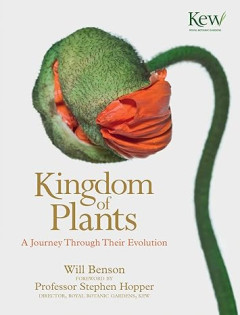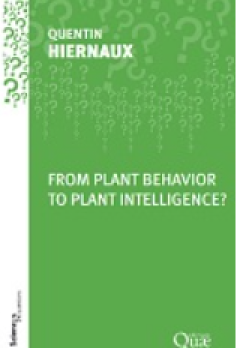Ditapis dengan

E-book Kingdom of Plants: A Journey Through Their Evolution
This book accompanies the landmark television series Kingdom of Plants 3D: With David Attenborough. In the last 500 million years, plants have undertaken an epic journey that has not only spanned the ages but has altered the very make-up of the planet. It was a journey that began in a dark and barren world, and has culminated in a planet that is draped in rich colours, and overflowing with a…
- Edisi
- -
- ISBN/ISSN
- 9780007463336
- Deskripsi Fisik
- 274 halaman, ilus.
- Judul Seri
- -
- No. Panggil
- 580 BEN k
E-book Remote Sensing of Plant Biodiversity
Improved detection and monitoring of biodiversity is critical at a time when Earth’s biodiversity loss due to human activities is accelerating at an unprecedented rate. We face the largest loss of biodiversity in human history, a loss which has been called the “sixth mass extinction” (Leakey 1996; Kolbert 2014), given that its mag-nitude is in proportion to past…
- Edisi
- -
- ISBN/ISSN
- 9783030331573
- Deskripsi Fisik
- 594 hlm
- Judul Seri
- -
- No. Panggil
- 580 ADE r

E-book CRC World Dictionary of Palms: Common Names, Scientific Names, Eponyms…
Umberto Quattrocchi has brought us some amazing and useful works through the various dictionaries that he has compiled. This time it is for two very important plant families the palms and the cycads that are synthesized here in these two volumes. Each entry is fascinating not just for the botany and full nomenclature of the plant species but for all the associated uses, folklore and interaction…
- Edisi
- -
- ISBN/ISSN
- 9781498782791
- Deskripsi Fisik
- 2011 halaman
- Judul Seri
- -
- No. Panggil
- 580.3 QUA c
E-book The Wheat Genome
In 2018, the International Wheat Genome Sequencing Consortium published a reference genome sequence for bread wheat (Triticum aestivum L.). The landmark achievement was the culmination of a thirteen-year international effort focused on the production of a genome sequence linked to genotypic/phenotypic maps to advance understanding of traits an…
- Edisi
- -
- ISBN/ISSN
- 9783031382949
- Deskripsi Fisik
- 328 hlm
- Judul Seri
- -
- No. Panggil
- 580 ROG t
E-book Illustrated Pollen Terminology
During the first half of the nineteenth century, some fundamental insights into pollen morphology and physiology were achieved. Purkinje made the first attempt for a palynological terminology by classifying pollen based on their morphology (Purkinje 1830). Wodehouse (1935) pointed out that “Purkinje’s system of nomenclature deserved much more attention than was ever given …
- Edisi
- -
- ISBN/ISSN
- 9783319713656
- Deskripsi Fisik
- 483 hlm
- Judul Seri
- -
- No. Panggil
- 580 HAL i

E-book From Plant Behavior to Plant Intelligence?
Behavior is a key concept in numerous fields of study: psychology, ethology, but also in the biology of organisms. It does not cause much surprise that dolphins, chimpanzees or rats display rational behavior – after all, they are not so different from us. But what about the organisms we deem “simpler”? Or even brainless organisms like plants? Do t…
- Edisi
- -
- ISBN/ISSN
- 9782759237463
- Deskripsi Fisik
- 107 hlm
- Judul Seri
- -
- No. Panggil
- 580 HIE f

E-book Sago Palm: Multiple Contributions to Food Security and Sustainable Liv…
t present, as estimated by FAO, the world produces more or less sufficient food to meet the needs of world population and maintains sufficient food stock to cover nearly 25% of estimated annual utilization. Despite the positive situation on the sup-ply side, FAO’s estimation in 2014–2016 indicated that, globally, 795 million peo-ple were unable to meet their dietary energy requ…
- Edisi
- -
- ISBN/ISSN
- 9789811052699
- Deskripsi Fisik
- 317 hlm
- Judul Seri
- -
- No. Panggil
- 580 KON s
E-book A Researcher’s Guide to: Plant Science
Advances made during decades of spaceflight experimentation have identified critical gaps in our understanding of the role of gravity and the spaceflight environment on plant biology at the cellular, tissue, whole plant, and community levels. The International Space Station is a unique platform where reduced gravity can be used to probe and dissect biological mechanisms in plants for underst…
- Edisi
- -
- ISBN/ISSN
- -
- Deskripsi Fisik
- 44 halaman, ilus.
- Judul Seri
- -
- No. Panggil
- 580 NAS a

E-book Dark Botany: The Herbarium Tales
Dark Botany activates the material and sensorial wonder of plants—their energy, their mysterious allure, their capacities and skills, their independent might. In this Wunderkammer of critical plant studies essays and plant+artworks, the herbarium emerges as a site of multiple materialities and reflexive forms of counter-narrative. Herbaria specimens come alive as assemblages, telling truths a…
- Edisi
- -
- ISBN/ISSN
- 9781785421365
- Deskripsi Fisik
- 334 halaman
- Judul Seri
- -
- No. Panggil
- 580 GIB d
E-book The Plant Stem : A Microscopic Aspect
errestrial life forms made their move on land about 400 mil-lion years ago. Plants crossed the barrier between life in water to life in the atmosphere. With the invention of stable stems, plants overcame hydrological and mechanical problems. The construction of plant stems is the focus of this book. It demon-strates that nature created a framework in which plant stems…
- Edisi
- -
- ISBN/ISSN
- 9783319735245
- Deskripsi Fisik
- 207 hlm
- Judul Seri
- -
- No. Panggil
- 580 SCH t
 Karya Umum
Karya Umum  Filsafat
Filsafat  Agama
Agama  Ilmu-ilmu Sosial
Ilmu-ilmu Sosial  Bahasa
Bahasa  Ilmu-ilmu Murni
Ilmu-ilmu Murni  Ilmu-ilmu Terapan
Ilmu-ilmu Terapan  Kesenian, Hiburan, dan Olahraga
Kesenian, Hiburan, dan Olahraga  Kesusastraan
Kesusastraan  Geografi dan Sejarah
Geografi dan Sejarah